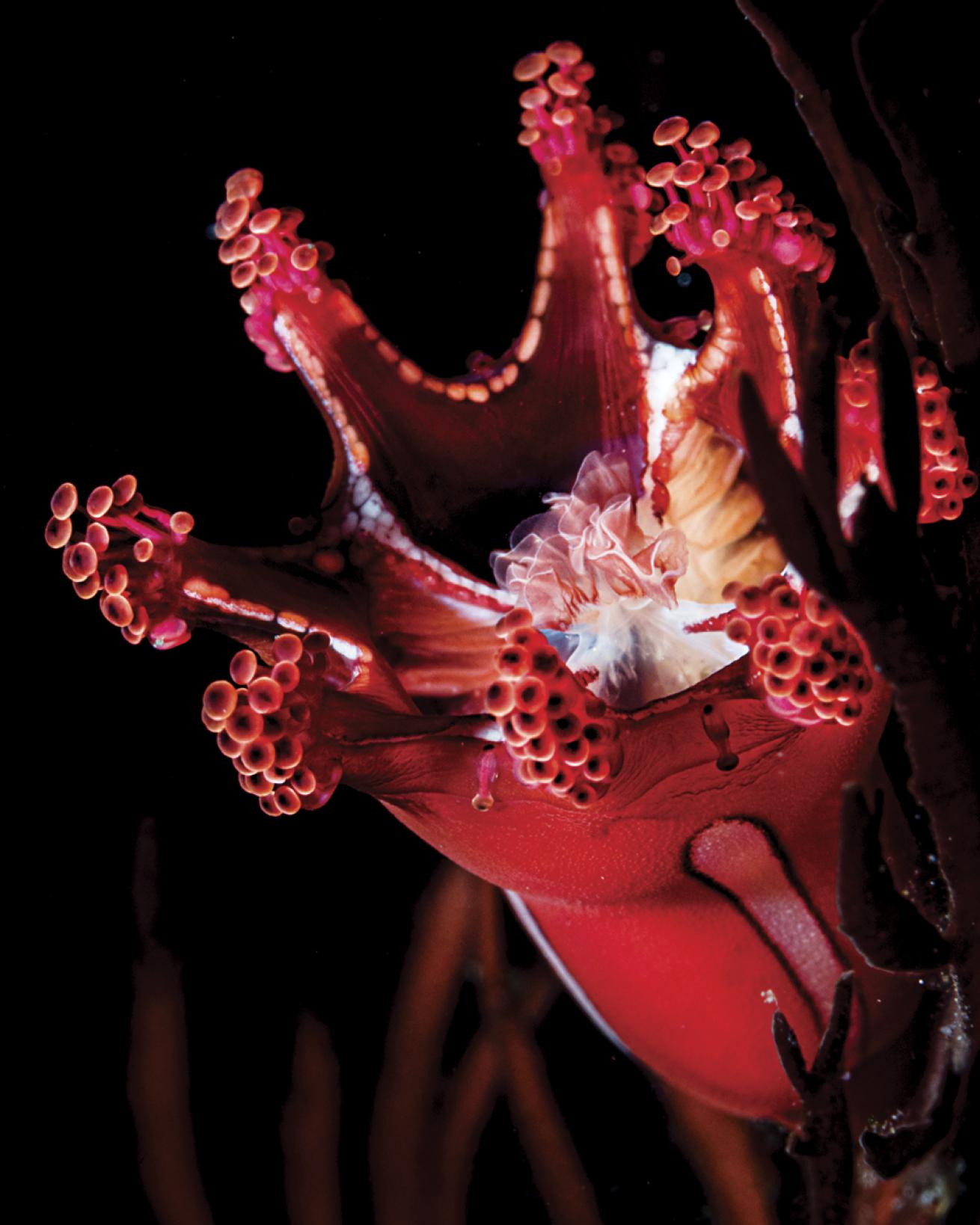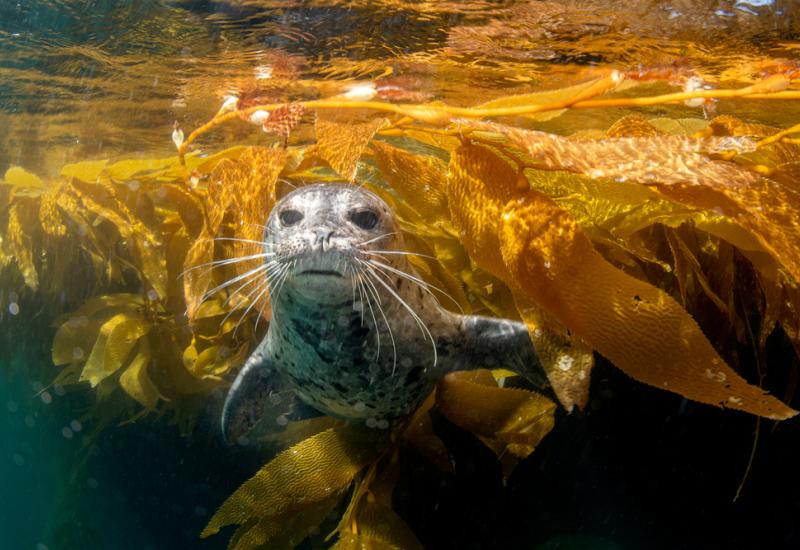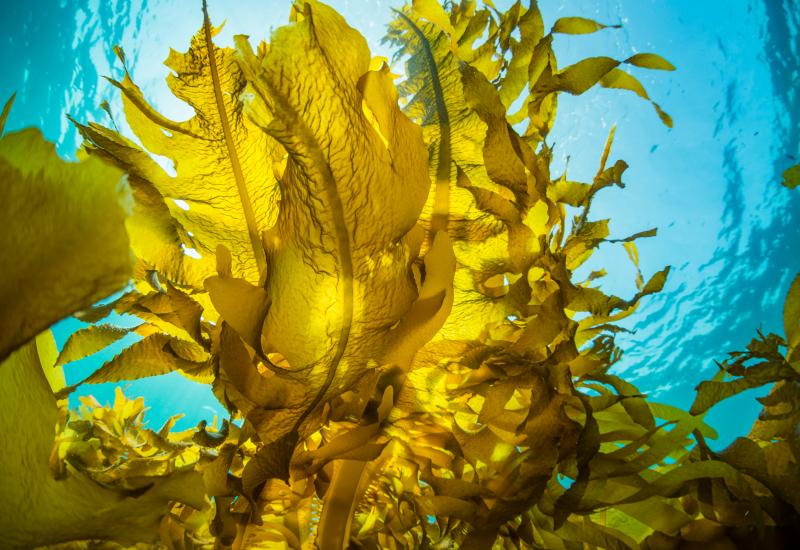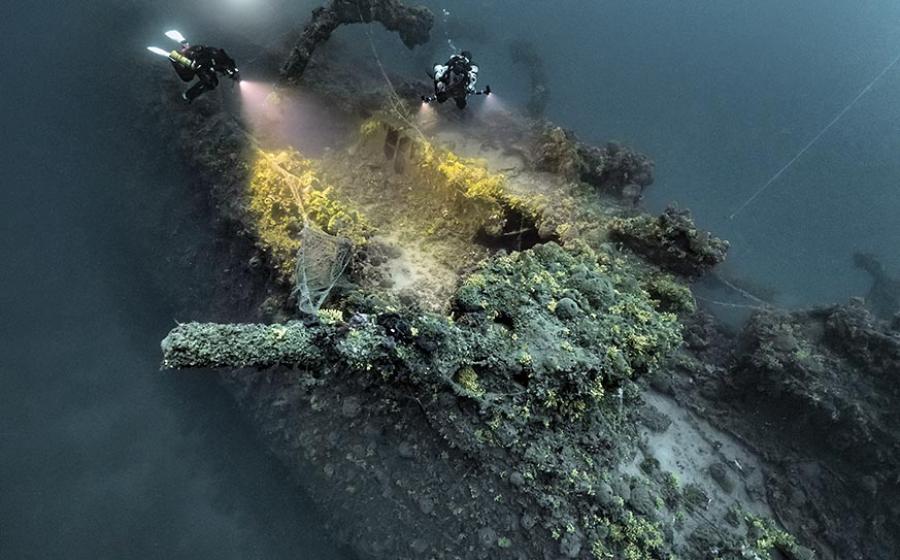Coldwater Dispatches: Polar Jellyfish

Patrick WebsterThe “grape clusters” of stinging tentacles give away the medusoid nature of this Manania handi stalked jellyfish.
1400 hours, March 11, 2023
Argentinian Patagonia, approx.
54°44’S, 63°51’W
Water temperature: 46ºF / 7.8ºC
Jules Verne was right: There is a lighthouse at the end of the world. I know because it’s looking down at me, blinking as I dive into more of my own leagues under the sea. An eerily familiar giant kelp forest rises to meet me, just like the water woods of California some 7,000 miles away. The ocean is crisp and clear, inviting even, and it feels safe back here in the fjord. Beyond the cliffs to my back lie Patagonia’s violent winds, the dreaded Drake Passage and, next stop, Antarctica. But oceanic tempers are temperate today. Let’s go see what we can find.
Somebody kelp me. I’m seeing staurozoans! Jellyfish chandeliers are swinging from the kelpy sea-lings; wow, what a treat! I’ve seen similar stalked medusae a handful of times back home in Monterey Bay, California, but never in these numbers—they are everywhere. And are those sea stars crawling up the fronds to nab them? Staurozoans are a coldwater diver’s delight and might as well be our mascots. The 50-some species of anemone-adjacent, “settled sea nettle,” reef estate–owning jellyfishes decidedly avoid warm waters, preferring chilly and colder waters to both planetary poles. “Antitropical distribution” say the books—heh, kind of like me these days, they steer clear of warm equatorial waters. Haliclystus antarcticus, it’s a pleasure to meet you.
0900 hours, August 10, 2023
Greenland, approx. 66°56’N, 53°44’W
Water temperature: 41ºF / 5ºC
It’s OK, I didn’t really need my right hand anyway. Drysuits and dry gloves seem to have the same relationship status as a computer and a printer. (It’s complicated.)
Drysuit: Consistent and dependable, with its limitations and failures sure, but often due to user error. Dry gloves: Mad at you for some reason, on strike when it matters most, a reluctant assistant at best. Confirmed: It’s cold north of the Arctic Circle.
All right, now that my glove is drained and secured, let’s try this again.
More stalked jellyfishes—a delightful surprise. Not that I wasn’t expecting to see staurozoans up here, but there are so few records and few that know to look for the swinging camo jellies, so you never want to get your hopes up. Stalked jellies often hang upside down, dangling bodies and tentacles to catch unsuspecting critters. Swaying like punitive pendulums, they behave like murderous feather dusters, sweeping at the armies of amphipods and other small animals crawling all over the algal understory.
Related Reading: Why You Should Try Drysuit Diving
Tons of them, just like I saw in Patagonia and last year off Cosmos Cove in Alaska—loads of stalked jellyfishes there too. Haliclystus in both those cases, but this one looks different. Time to consult my iNaturalist app. I tag Claudia Mills, the jelly expert, and it turns out I’ve got staurozoa Manania—the first online observation of this genus in Greenland. Gah, I love my job! Now, about these chilly fingers…










